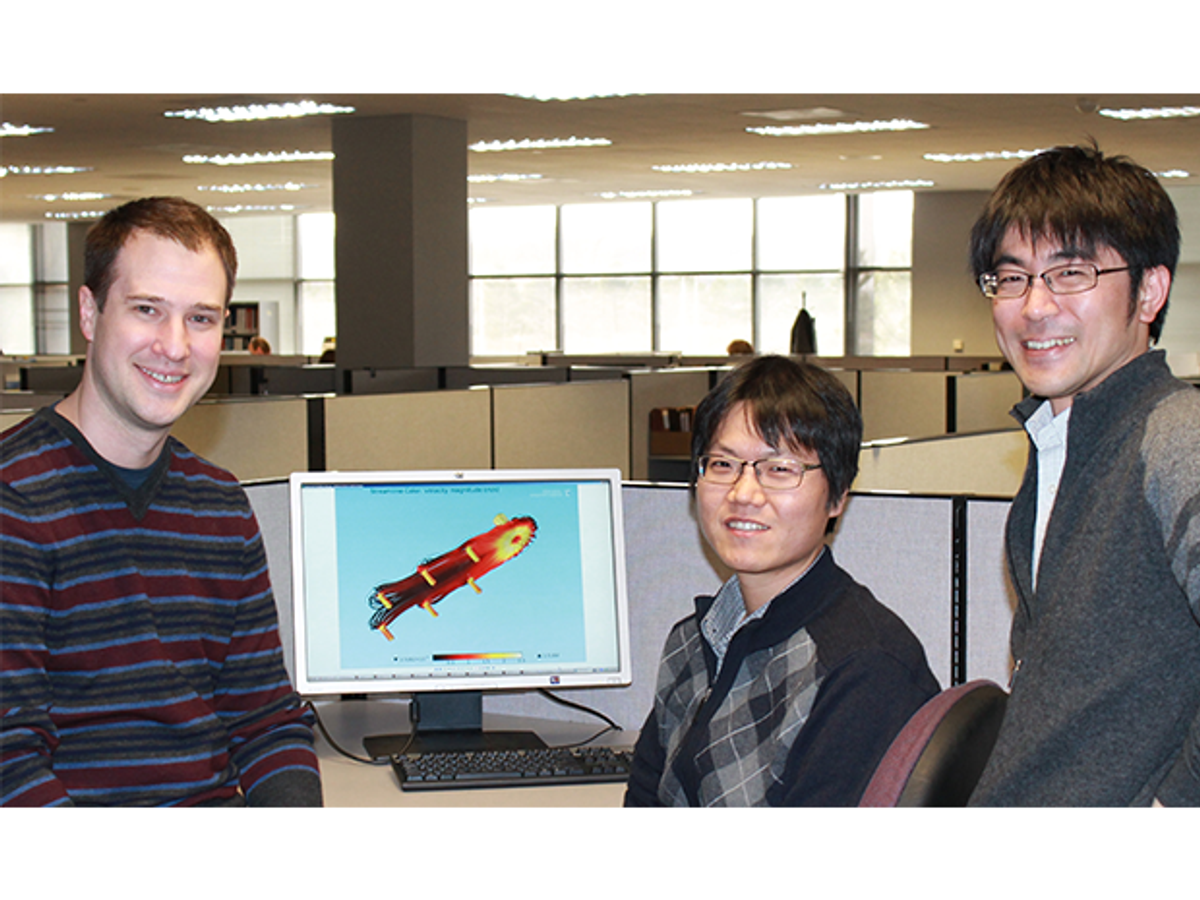The Manager’s Guide is a window into ways that leading tech companies have incorporated multiphysics simulation into their workflow. This resource illustrates the mathematical modeling functionality of COMSOL Multiphysics® software and how it can be used by simulation experts to overcome design challenges that are not always possible to resolve experimentally. Read to learn how engineers across a wide range of industries used multiphysics simulation to improve critical aspects of product design.
One story highlights how Boeing used multiphysics simulation to model thermal expansion in protective coatings for aircraft composites, which allowed engineers to use a lighter material, and still maintain sufficient lightning protection. An electrically conductive expanded metal foil (EMF) inner layer was added to the composite structure such that excess current and heat would dissipate rapidly in the event of lightning. However, thermal cycling induces stress that can result in cracks in the coating and is not ideal for the EMF. Engineers at Boeing used COMSOL Multiphysics® software to optimize EMF layer design; balancing current-carrying capacity, displacement due to thermally induced movement of protective layers, and weight; to create an optimized design that is both lightweight and protective against lightning.
Another article describes how the car manufacturer, Toyota, optimized topology for improved cooling in their hybrid vehicles. Toyotas hybrid vehicles contain complex electrical systems that contain power semiconductor devices such as diodes and insulated gate bipolar transistors that are used for power conversion. To keep the systems within thermal operating conditions, the devices are mounted on aluminum heat sinks, around which a water/glycol coolant mixture is pumped. Engineers at the Toyota Research Institute of North America (TRI-NA) in Ann Arbor, Michigan used simulation to redesign the topology of the aluminum heat sink to reduce the size by half while dissipating the same amount of heat.
Miele, the German manufacturer of induction stoves, is also highlighted in the Managers Guide. Engineers at MieleTec FH Bielefeld (a joint research laboratory between Miele & Cie. KG and the University of Applied Sciences Bielefeld, Germany) used COMSOL Multiphysics® to solve important design challenges in the development of their induction stoves. Simulating the induction heating process involved solving heat transfer concurrently with electromagnetics to determine the best operating conditions, materials, and geometry. Making use of simulation, the engineers were able to reduce the number of experiments needed to finalize their designs by 80%.
Continue reading to see how companies in industries ranging from auto manufacturing to graphene and plasmonics incorporated multiphysics simulation into their work flow to optimize production design.
Learn More: https://comsol.com/c/3wvf




